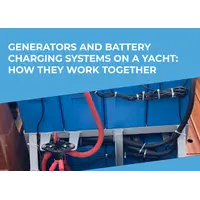Sailing has always been associated with opulence, thrill and a break from the routine. Whether you're an experienced yachtsman or a newbie in the world of boating the idea of taking on a yacht delivery can be both thrilling and intimidating. This article’s main goal is to provide you with the information needed for a successful yacht delivery experience. We will explore the factors of evaluating yacht condition and planning your route, laying the groundwork for a pleasant voyage.
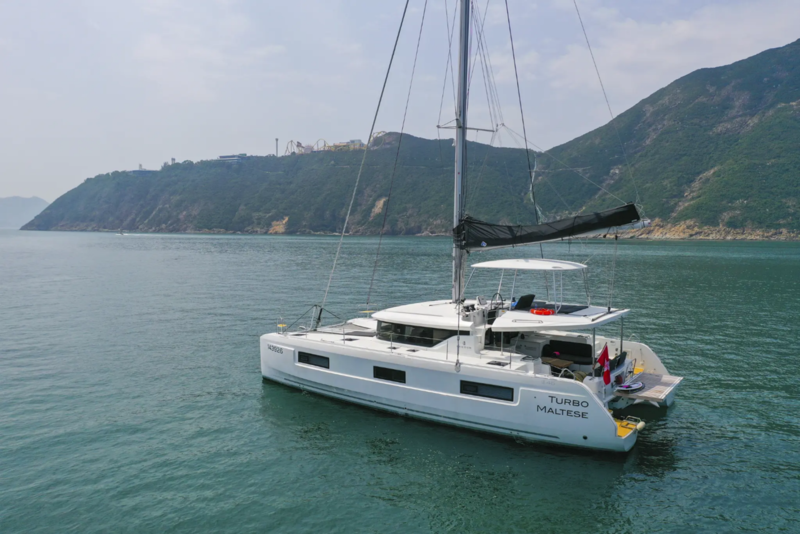
Yacht delivery is a process that involves moving a boat from one place to another in an efficient way. Whether you're relocating a yacht to a harbor, delivering it post-purchase for yourself or your client, each stage demands thorough planning and precise execution. First, we will explain how to evaluate the yachts condition and to strategize the best route. After that we will discuss the matters of security, necessary equipment and documentation.
If you are in need of personal consultations, you can explore yacht delivery services at https://toprik.com/services/delivery/yacht delivery/. Our skilled team manages all the process, from technical assessments to route mapping, resulting in a safe and efficient delivery of your yacht.
Yacht Condition Assessment
Even when you are mentally prepared for such an undertaking, it doesn’t mean that your yacht necessarily is. Planning ahead is always cheaper than fixing unexpected problems later, so let’s go through main checkpoints of assessing your boat’s condition.
Technical Inspection
First, we need to check the core parts: hull and deck, engine and drive systems.
Hull and deck. Before the delivery voyage you must carefully inspect the hull for any signs of dangerous deformation, open cracks, large blisters and holes. You don’t have to polish every single scratch, but if you have a bad feel about a certain problem, better not gamble and fix it beforehand, even if it delays the delivery. Same goes for the deck – even though it is not submerged in water, a thorough visual check is required just in case. Pay extra attention to anything relating to sailing rigging, especially moving parts.
Engine and drive systems. You can either do it yourself or call a professional, your choice. Just remember that you can only notice certain problems with enough experience – what looks right to an amateur could be a red flag to an experienced mechanic. Not only you must ensure that there are no obvious leaks, belt and tube ruptures, etc., but go through realignment and part replacement if it’s necessary for smooth operation before a long journey. Replacing the oil, proper lubrication, seal tightening – these are just some of the possible tasks you might need to complete before moving on.

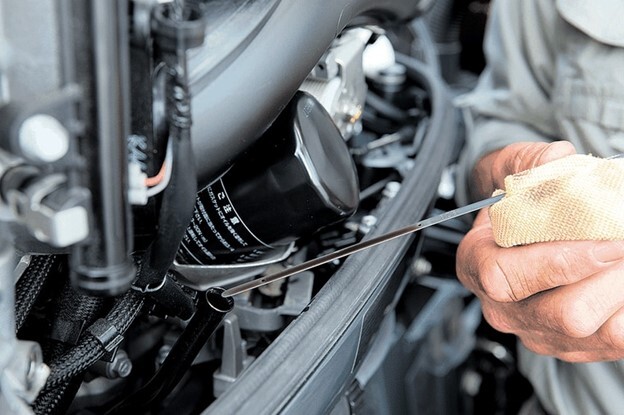
Equipment and Systems
The internals of the yacht are just as important for a safe voyage – don’t neglect navigation equipment checkups, as well as the electrical circuit troubleshooting and repair.
Navigation equipment. GPS, autopilot, chartplotter, electronic compass – whatever it is you use, go through it again before you unmoor. You never know when a certain device is destined to fail, so it is better to not only check everything, but also keep some spare devices that your life depends on. It is normal to have multiples compasses or GPS systems in working condition. No matter what model of the chartplotter you use, it will not help you if you downloaded the wrong maps or are not entirely sure how to read them, so spend some time with your specific chartplotter until you get used to its interface and know exactly what buttons to push. If the device is old, laggy and seems unreliable, consider replacing it with a new one – there plenty good offers on the market nowadays. Same goes for GPS systems.
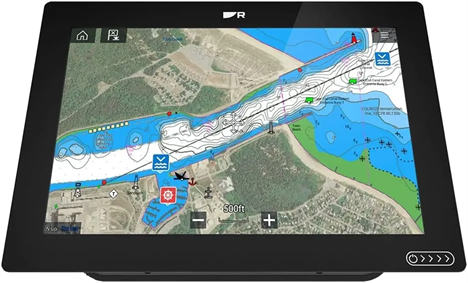
Electrical equipment and batteries. The boat’s circuit is not only the most complicated system, but also the most vulnerable to negligence. It is important to constantly monitor the condition of your generators, batteries, solar panels and wiring. None of the electrical navigation devices will work without power, so you would be back to paper maps and conventional compass in case of a failed generator. When it comes to electrics, we recommend hiring a professional for repairs. You might get away with sloppy craftsmanship when it comes to fixing a door in a cabin or improvising your own fenders, but one mistake with electricity and yacht delivery will be the least of your problems. Redundancy is important even if everything works perfectly – always have spare batteries and maybe even backup generators.
Mechanical and Hydraulic Equipment
Sailing with malfunctioning steering or anchor systems is an absolute nightmare, so don’t miss this checkpoint either.
Steering system. The nature of the steering system defines what you must check for – on simple yachts with direct rudder control it is purely mechanical checkup, but with hydraulic steering you must also check for leaks, proper levels of fluid and smooth connections between the wheel and the rudder. Use your ears – does it sound the way it’s supposed to? Any unusual noises must be addressed right away, before they grow into something worse.
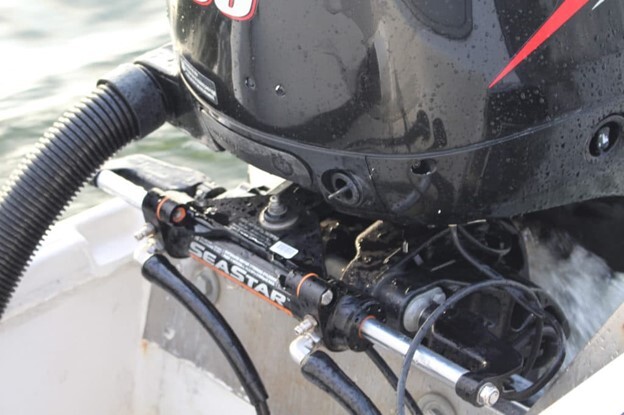
Anchor system. Don’t ignore any of the parts, no matter how reliable they appear in your head. The anchor itself (especially those with moving flukes), the chain, the windlass – go through all of those like Sherlock with a magnifying glass. Corrosion is a very slow criminal, as it might take ages for one of the bearings or chain links to crack, luring you into a sense of supposed indestructability of the anchor system, especially if you fully believe the manufacturer’s advertisements.
Route Planning
Once the yacht's condition has been thoroughly assessed and any necessary repairs or maintenance have been completed, the next critical phase is route planning. Proper planning ensures a safe, efficient, and enjoyable journey. This section covers the selection of the optimal route and the creation of a detailed sailing plan.
Selection of the Optimal Route
We already talked about importance of proper map reading. To create a personal route, you will need proper skipper education and understanding your local environment. It involves knowledge of sea currents, reading weather conditions, calculating the optimal order of marinas and ports along the way. Details such as the type of soil your anchor is optimized for are also important.
Weather conditions. Although never fully reliable, weather data highly increases your chance of finishing your voyage safely and reduces the need to overprepare. Constantly monitor news regarding hurricanes, storms and other hazards, keep wind patterns and wave length information in mind to make it easier for you to navigate. Have a source of live updates on your vessel instead of reading the weather report once before sailing away. You can use special live maps of your region, like this wave height and wind map of the Mediterranean:
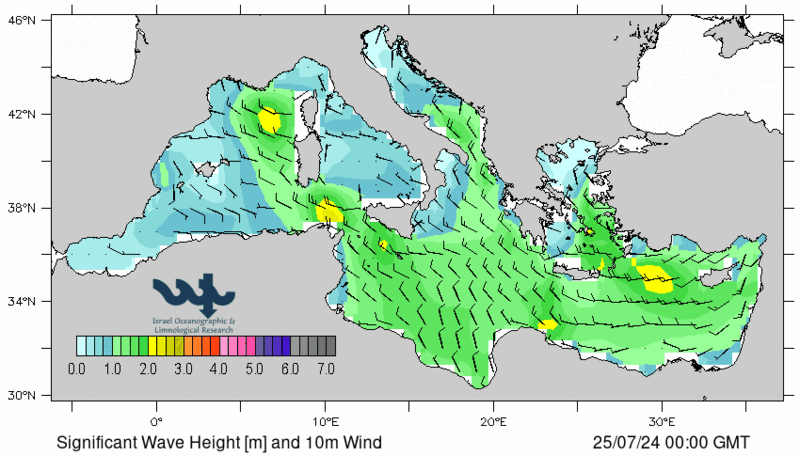
Sea currents. Underestimating the strength of a certain sea current will result in increased resource spending to overcome it on the spot, whether it’s fuel, time or electricity. Use the optimal current to reduce the resource consumption while avoiding currents than you will have to fight against. Not accounting for currents might even result in life-threatening situation for you and your crew if combined with unexpected weather conditions. One “perfect storm” consisting of multiple things you didn’t account for and your yacht delivery will turn into struggle for survival.
Stops and ports. Jumping between optimal spots is a science on its own, which even involves understanding the local markets if you are willing to optimize resupplying. But either way, you need to refuel, restock your food and refill your water tanks and there are always many options to choose from. Spending as little as possible in the process comes with experience. Invest time into research of every port: what kind of repair shops, stores and fuel stations they have, as well as price tags on their services.
Creating a Sailing Plan
With route created, we can move on to a more encompassing plan of the entire voyage. On this stage we taking everything into account, trying to expect the unexpected and calculating the optimal amount of fuel, power capacity, fenders, supplies, etc. We also plan for alternative routes and emergency situations.
Calculating time and fuel reserves. Fuel consumption depends on the size and type of your yacht, expected weather, size of the crew, weight of cargo and other factors. Time spend on a voyage must be estimated accounting for unexpected stops, without endangering the lives of anyone on board. Avoid “glass cannon” situations – overoptimizing often leads to losses instead of gains, since nothing goes as good as it seems in your head. When you grab some extra fuel, you move a little bit slower and it costs you extra, but you will not be stressed about one weather forecast suddenly ruining your entire plan.
Preparing an alternate route. Remember that main route is just the desirable route. Keep in mind than a hundred things outside of your control that can go wrong regardless of how prepared you are. That’s why you plan for multiple routes, even if they are not as optimal. A change in course sometimes is inevitable and it is much better to switch to another one without panic than to realize that you have no plan B after plan A was made impossible. Optimizing the way you switch to a new route is easier than improvising a new one on the fly.
Security
It’s not enough to prepare all the material goods, you must also keep in mind the value of human life. Security is paramount when embarking on a yacht delivery. Ensuring that rescue equipment, communication and navigation systems, and fire safety measures are in place and functioning correctly is essential for the safety of the yacht and its crew.
Checking Rescue Equipment
Yes, it might look tedious and boring, but in case of emergency you will be really happy you took care of various rescue devices.
Life jackets and life rafts. These are most crucial and the most recognized pieces of rescue equipment. Every single person on board must have access to these at all times. Inspect the jackets for damage, wear and tear, don’t buy the suspiciously cheap ones in the first place. When it comes to rafts, usually these are kept under the deck, so make sure that you can extract quickly, don’t get it buried under bunch of baggage. Inflating the raft must be also an easy to execute task for everyone on board. Also, make sure to get every crew member and passenger through man over board 101 briefing just in case. For example, you could at least explain what kind of raft you have on board and how to use it:
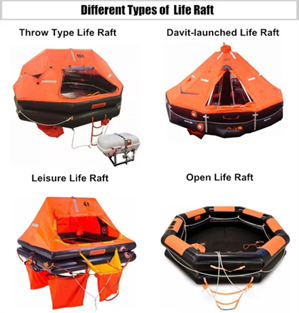
Emergency beacons. Emergency Position Indicating Radio Beacons (EPIRBs) and Personal Locator Beacons (PLBs) will be really handy if you are in a pickle – they are connected to satellite network and rescuers will know exactly where to look for your yacht or it’s wreck. Of course, it makes sense to check thoroughly whether they work efficiently before the delivery.
Communication and Navigation Systems
Beacons are the last resort, but for most cases, hopefully, a VHF radio will do. It is also easier to NOT get into trouble if you are using modern navigation systems.
Communication systems. Thankfully, Morse code doesn’t often come into play nowadays, since VHF radios, presented in a variety of models on the market, provide precise connection to nearby coastal stations and other vessels. To ensure most efficient communication, check the condition of your radio and, again, have a spare one just in case. And if you are looking to communicate over long distances, add internet apps and satellite phones to the list.
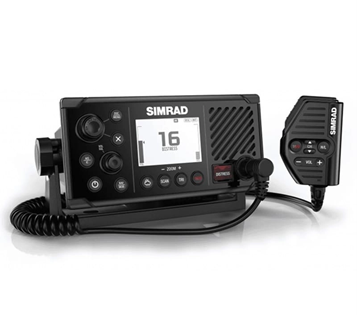
Navigation systems. We already talked about the importance of chartplotters when planning a route, but modern multifunctional marine displays can do so much more, including 360° underwater vision, radar, monitoring precisely the yacht’s current speed, location, updating all the information live. Read the manual to utilize a modern multifunctional display properly and be careful with it – even though they are built for the sea, they are still consumer electronic devices.
Fire Safety
Might not seem like top priority, considering you are surrounded by water, but you’d be surprised how little you can do with fire on board without special devices and preparation.
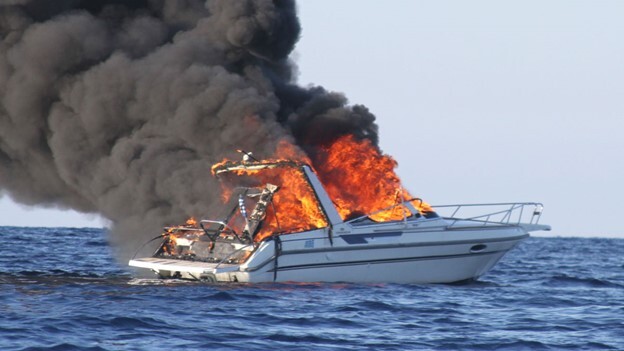
Fire extinguishers. Whether it’s a malfunctioning circuit or a fuel explosion, extinguisher will help you deal with it, as long as you use the right type. Place multiple of them in the vicinity of possible hazards. Carefully choose right models for the right type of fire and constantly check if they are easy to reach and use.
Fire detection systems. Excluding human factor from the equation, heat sensor and smoke detectors are both useful tools to install in the key areas, such as engine room and galley. When checking their condition, try to recreate the situation when you are the furthest from it when it’s activated, to make sure that you can hear the alarm from any area of the yacht.
Fire drills and training. Even the best equipment can be completely misused during sheer panic. To avoid chaos, make it normal for your crew and passengers: brief them on types of extinguishers, how to use them, how to escape the rooms and the vessel in case of emergency, etc.
Preparing Equipment and Supplies
Vessel and people on board will all be consuming resources every single day of your journey. You will need fuel and lubricants for the equipment, food and water, various tools and spare parts. And you also should optimize the storage methods to fit it all in.
Fuel and Lubricants
Without either of these all the sophisticated engineering of the yacht’s engine, steering, hydraulic mechanisms etc. will be useless. Think of they as blood of the vessel and make sure that it never bleeds out by storing as much fuel and lubricants as needed in a safe way. Also, think of alternate ways of refueling in case things go south.
Calculating fuel requirements. Taking into account weight, speed, length of the route and other main factors, try to estimate how much fuel you need based on your own practice and experience of other yachtsmen. Don’t be afraid to ask – nowadays there are many yachting forums and channels where seasoned sailors share their opinions. When calculating the amount, account for unexpected delays and stops, try to always have more fuel than you think you need.
Safe storage of fuel and lubricants. Since fuel is a major fire hazard, keep it away from anything that can create a fire or a spark, like wires, stoves, etc. Avoid putting any heat source near the storage location and don’t expose the container to scorching sun. Make sure all the boxes and canisters are reliably secured to prevent spills during a storm. Also, there are special spill kits for such occasions, which include equipment for containing the damage caused by aggressive liquids.
Contingency plans for refueling. Take some time to figure out possible stops for refueling in case something goes wrong. Make some quick online research on marinas along your route, even including those that you probably will not need to visit. After all, contingency is all about improbable situations.
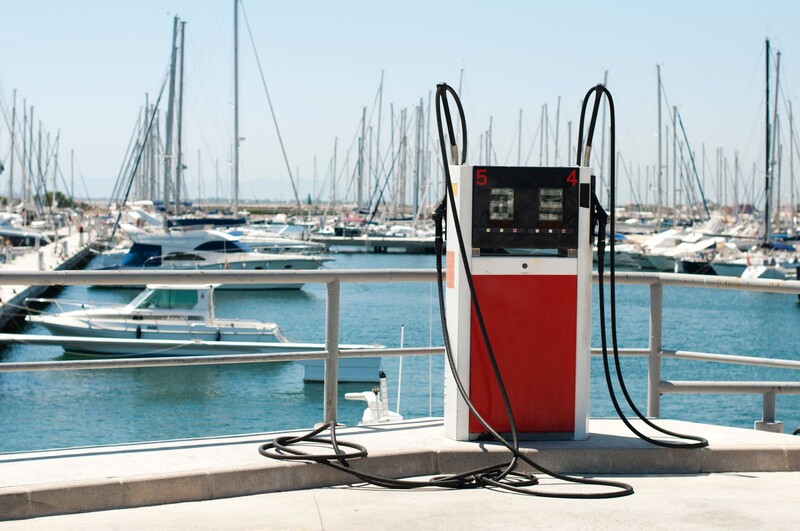
Food and Water
Don’t neglect this part: it might seem like food and water are in abundance in any marina, but once you take your budget into account, things get interesting. And expensive. There are many ports that capitalize on their favorable, even monopoly-like position in a region and thus are able to make huge profits off something as simple as normal water or snacks. If you are unfortunate enough to include a marina like this into your route for resupply, expect to throw away a lot of money into nowhere.
Calculating food and water requirements. To prevent overspending and spoilage, know how much you’ll need in advance. Take into account not only amount of people on board, but also their appetite. On hot summer days water consumption will be much higher, and if one of your friends is just off his diet, galley cupboards and fridges might get emptied much faster than you expect. Try to imagine what’s going to happen with your supplies over time instead of perceiving them as one large storage – it’s amazing how fast the supplies can disappear with a hardworking crew on board.
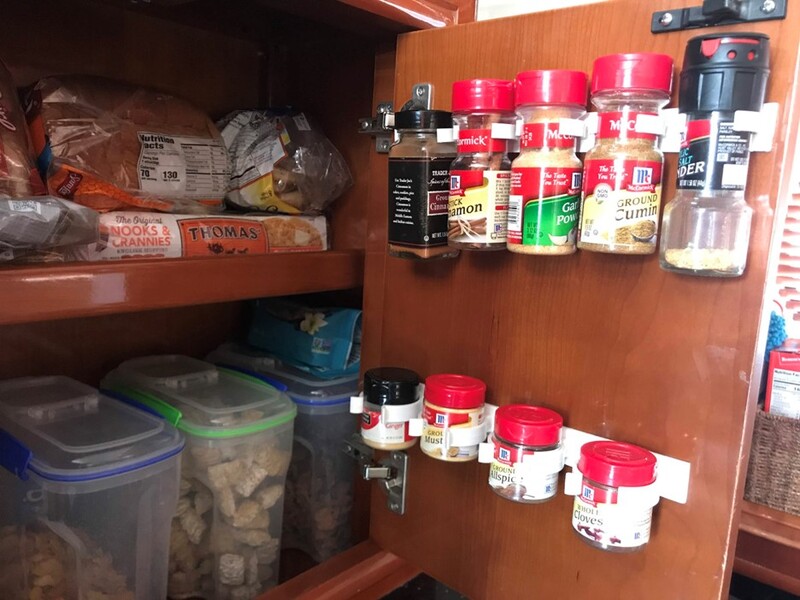
Safe storage of food and water. It’s not only about the amount – spoilage could ruin all your plans if you are not careful. Refrigeration, sealed containers and dry storage areas can be utilized to keep the food fresh. Avoid storing supplies near heat sources and don’t try to be a cheapskate when it comes to fridges and coolers, especially during summer season. From financial standpoint, there’s nothing more wasteful than allowing your food to rot, so it’s an investment that pays off over time.
When it comes to water, since it’s usually stored in tanks, consider purchasing a water purification system to prevent contamination of all your drinking water at once. Forced diet in case of food spoilage is one thing, but ending up in the middle of the sea without anything to drink is a pure survival horror story.
Contingency plans for resupplying. Just like with fuel, make your research on possible resupply points. Keep in mind that you would rather avoid expensive marinas we mentioned earlier. Some resupply points might not have your favorite food or have scarce choice in general, but don’t brush them off for that reason – it’s about what’s right for the trip and once the vessel is delivered, you can have any meal you want on the shore.
Tools and Spare Parts
It is impossible to conjure a replacement part for the generator, engine, cooling system of water filtering system in the middle of the sea. In case of sudden equipment failure, if you have no spares, you’d have to completely change your route, hoping that nearby port has those spares at all. But even if you have one and you didn’t take your repair kit with you, it still might not matter since you can’t always replace the damaged part with your bare hands.
Identifying necessary tools and spare parts. Go through all the installed equipment and write down all the possible spare parts you might need in case of emergency. There’s no need to have a spare for everything, just the parts that are crucial for yacht’s smooth operation. It makes sense to have multiple spares for the flimsiest parts such as belts and filters. As for the tools, it makes sense to cover all bases, taking screwdrivers, wrenches, pliers etc. as well as more specialized equipment in case you can fix the electric circuit yourself. Take into account your own craftsmanship skills when making the choice.
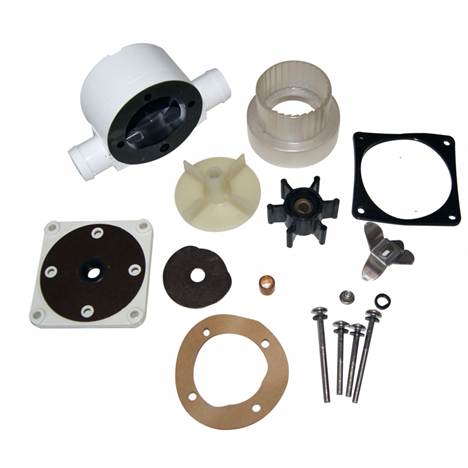
Ensuring tools and spare parts are in good condition. Take care of your repair kits: lubricate them properly, clean them right after you are done with repairs, have a habit to attach your tools with a string or a rope to avoid dropping them into water during repairs. Store the parts in dry cool areas and don’t forget to check on old forgotten spares to ensure they are still usable.
Contingency plans for obtaining additional items. Same pattern – make your research. Try to figure out whether these additional items are new or used, whether you can get a discount or a wholesale deal to optimize your budget. Many marinas sell items in bundles, reducing the price of each tool or part, so if you have to stop for an unexpected resupply, take some time to go through purchasing options.
Documents and Permissions
Even if you and your boat are physically ready, it doesn’t mean legal readiness. Without the right paper you might end up being called a criminal or just cause a lot of confusion for yourself and others, delaying the delivery and having to pay additional fees and expenses. Your vessel must be registered and exist not only on water but in the world of law, and the ability to sail a yacht doesn’t mean the right to do it in the eyes of others – your skipper abilities don’t exist legally until you have the proof for it.
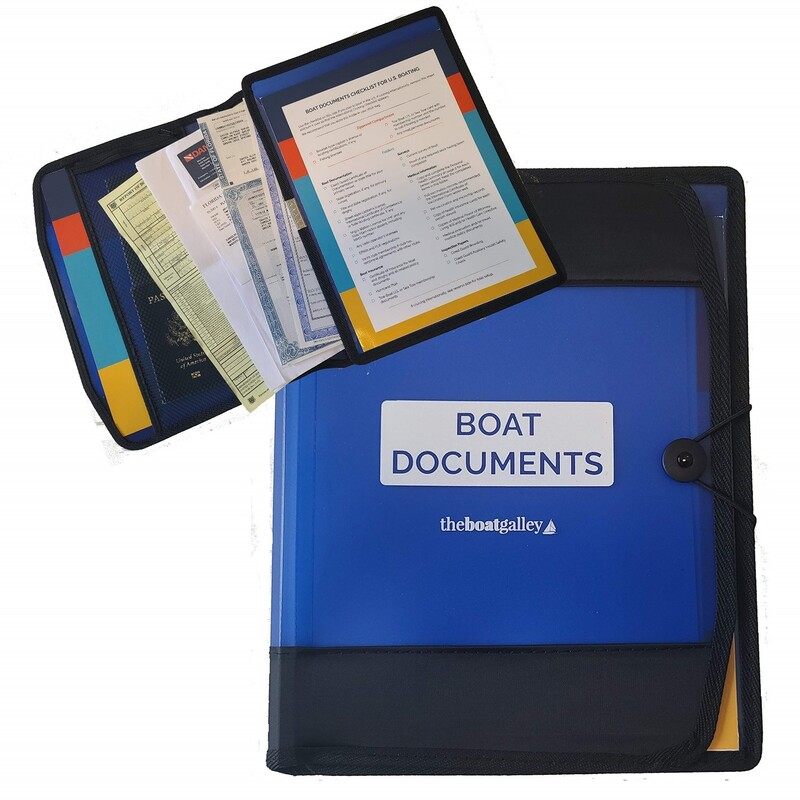
Vessel Documents
Its mostly about documents that allow your yacht to be used and, of course, insurance. Keep them ready to go at any second – you never need those until you do, in the worst possible moment. Make sure that they are all up-to-date.
Registration and certificates. Sailing an unregistered vessel is a sure way to get in trouble and proving that you just forgot your documents in a previous marina is quite a hassle. It is so easy to forget to take some papers with you, including not only registry, but tonnage and safety certificates. Also, it’s easy to forget the date of their expiry, so before you unmoor go through them just in case. Making memos about the renewal dates can help in that.
Insurance. It’s not just about you and your yacht, it’s also about safety of others. If your insurance is expired, your driving style will change from confident to panicked very quickly in case of emergency. Since your imagination will paint you a picture of mind-boggling financial losses, who knows whether you’ll make the right decision to avoid the collision with another yacht. Nobody wants a skipper of a boat nearby to panic under any circumstances - have full coverage for both the hull and mechanical parts at all times.
Sailing permit. It’s not 16th century so not much uncharted waters left on Earth – whenever you go, you’ll have to make the authorities know beforehand. It depends on region and local laws how it is implemented, but overall, it authorizes your vessel to be present in a certain region and allows you to enter certain ports. And if you think that such permits are too expensive, well, legal penalties will cost you much more if you’ll get caught without it.
Personal Documents
Last, but not least – pieces of paper proving that you are indeed a human being with the right and appropriate education to drive a specific type of boat. Of course, you and your crew must be fully covered by insurance as well.
Current passport. Every person on board must have a passport or he/she will be considered a threat to pretty much any country automatically or legal authority automatically. Renewal and validity of all the passports are your top priority.
Visa. Getting stopped without a visa will also get you into trouble, but at least they will know who you are and where you came from before shutting you down. Make your research beforehand on what type of visa is required for your route. You might need multiple for long-distance delivery trips.
Insurance. In some countries you’ll never be able to get proper medical care unless you are insured. Other than covering your health, invest into travel and personal liability insurance. You can never avoid taking risks, but you can mitigate them and minimize possible damage with proper coverage.
Driving certificate. You know you need this document if you are a skipper, but some of your crewmen might need it too if they are heavily involved into driving the yacht. This paper proves your competency and authority over the yacht and its crew, so it’s a must.
In conclusion, we would like to remind you that unless you know exactly what you are doing, it’s always better to leave a difficult job to a professional. If you need a yacht delivered by experienced sailors at an affordable price, take a look into this section of our marketplace: https://toprik.com/services/delivery/yacht delivery/.



